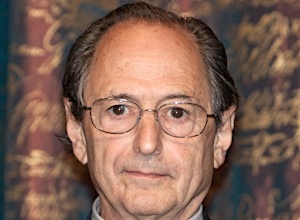While many epidemiologists are warning of months, or even years, of massive social disruption and millions of deaths, Michael Levitt, a Nobel laureate and Stanford University biophysicist, says the data simply don’t support such a dire scenario.
Levitt began analysing the number of COVID-19 cases worldwide in January and correctly calculated that China would get through the worst of its coronavirus outbreak long before many health experts had predicted. Now, reports the Los Angeles Times, he foresees a similar outcome in the US and the rest of the world.
Levitt says the crisis scenario warnings are not supported by data especially in areas where reasonable social distancing measures are in place. “What we need is to control the panic,” he said. In the grand scheme, “we’re going to be fine.”
The report says Levitt, who received the 2013 Nobel Prize in chemistry for developing complex models of chemical systems, is seeing similar turning points in other nations, even those that did not instil the draconian isolation measures that China did.
He analysed data from 78 countries that reported more than 50 new cases of COVID-19 every day and sees “signs of recovery” in many of them. He’s not focusing on the total number of cases in a country, but on the number of new cases identified every day – and, especially, on the change in that number from one day to the next. “Numbers are still noisy, but there are clear signs of slowed growth.”
In places that have managed to recover from an initial outbreak, officials must still contend with the fact that the coronavirus may return. China is now fighting to stop new waves of infection coming in from places where the virus is spreading out of control. Other countries are bound to face the same problem.
Levitt acknowledges that his figures are messy and that the official case counts in many areas are too low because testing is spotty. But even with incomplete data, “a consistent decline means there’s some factor at work that is not just noise in the numbers,” he said. In other words, as long as the reasons for the inaccurate case counts remain the same, it’s still useful to compare them from one day to the next.
This unintended experiment in coronavirus spread will help researchers estimate the number of fatalities that would occur in a fully infected population, Levitt said. For instance, the Diamond Princess data allowed him to estimate that being exposed to the new coronavirus doubles a person’s risk of dying in the next two months. Most people have an extremely low risk of death in a two-month period, so that risk remains extremely low even when doubled.
Nicholas Reich, a biostatistician at the University of Massachusetts Amherst, said in the report that the analysis was thought-provoking, if nothing else. “Time will tell if Levitt’s predictions are correct,” Reich said “I do think that having a wide diversity of experts bringing their perspectives to the table will help decision-makers navigate the very tricky decisions they will be facing in the upcoming weeks and months.”
Dr Loren Miller, a physician and infectious diseases researcher at the Lundquist Institute for Biomedical Innovation at Harbor-UCLA Medical Centre, said it’s premature to draw any conclusions – either rosy or bleak – about the course the pandemic will take. “There’s a lot of uncertainty right now,” he said. “In China they nipped it in the bud in the nick of time. In the US we might have, or we might not have. We just don’t know.”
[link url="https://www.latimes.com/science/story/2020-03-22/coronavirus-outbreak-nobel-laureate?mod=article_inline"]Full Los Angeles Times report[/link]

